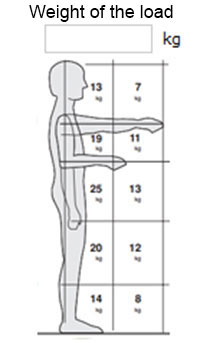The Spanish National Institute for Safety and Hygiene at Work prepares a Technical Guideline to assess and prevent the risks related to the manual handling of loads based on Royal Decree 487/1997 of 14 April.
The guide consists of two parts. In the first, the contents of RD 487/1997 are classified and in the second a method for the evaluation and prevention of risks related to the manual handling of loads is exposed.
The objective is to evaluate the worker’s degree of exposure to the risk of musculoskeletal disorders in the cases of lifting and carrying loads, verifying if the risk level assessed satisfies the minimum provision according to the legislation.
Its aim is to prevent possible injuries caused by lifting, above all risks that affect the back, especially the dorsal-low back area.








